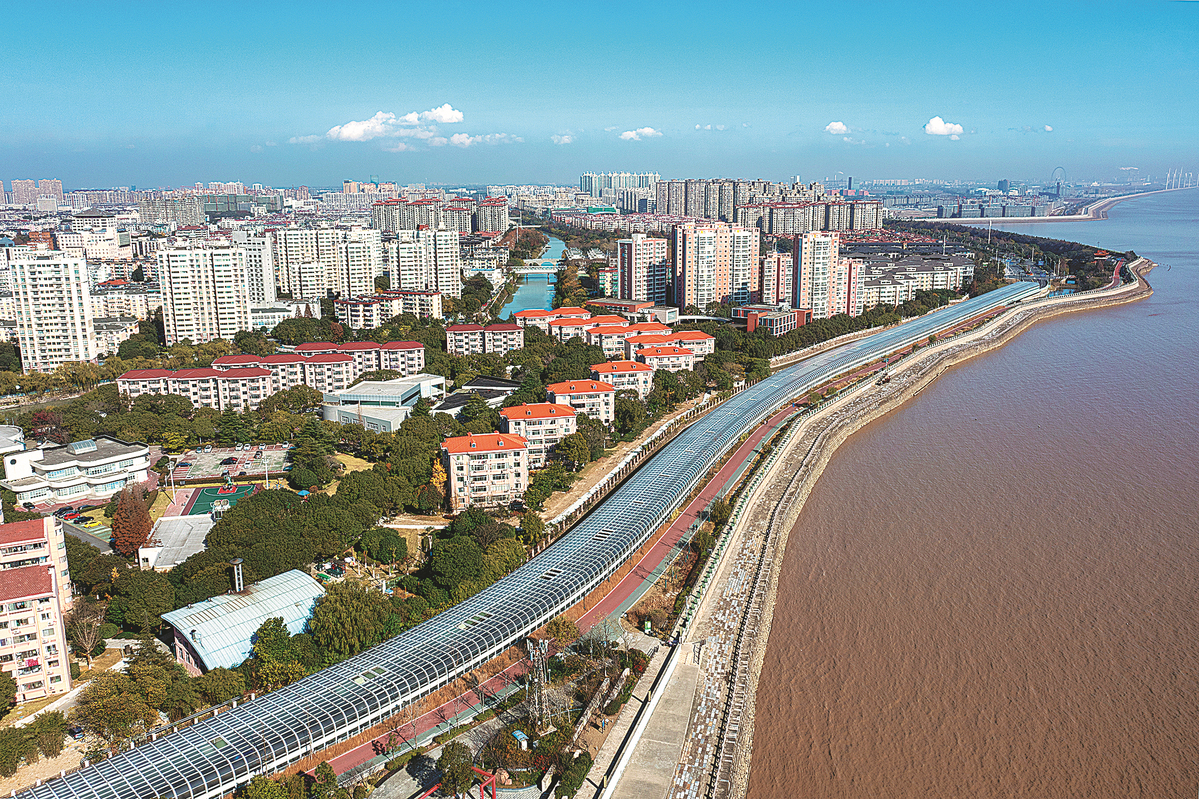CNNC leading player in eco-friendly winter warmth


China National Nuclear Corporation, the country's largest nuclear company, is looking to further develop nuclear reactors for district heating, with the country's first nuclear heating project in eastern parts of China put into operation on Dec 3.
With a total investment of about 940 million yuan ($147.5 million), the initial phase of the project is capable of providing winter heating for 464,000 square meters of residential property in Haiyan county, Zhejiang province.
Built upon residual thermal power of the Qinshan Nuclear Power Station in Zhejiang, the project will provide heating for end-users without carbon emissions. It is expected to provide heating on a large scale to public facilities, residential communities and industrial parks in Haiyan, according to Zhejiang Zero-Carbon Thermal Power Co Ltd.
Analysts said compared to traditional thermal sources, nuclear reactors generate heat without carbon emissions and are considered a green alternative to coal-based heat.
China's nuclear sector is entering a new period of development, laying a solid foundation for the sector's secure and efficient development, said Wang Shoujun, council president of the Chinese Nuclear Society.
China has become one of the top players on the global stage for nuclear power generation, with an advanced nuclear power industry chain, Wang added.
The attempt to apply nuclear energy to heating underscores China's resolve to decarbonize its energy-intensive heating sector, said Wei Hanyang, a power market analyst at research firm BloombergNEF.
He believes construction of the country's nuclear power plants is expected to advance steadily in the coming years, as the government is eager to reduce coal consumption to curb pollution.
Nuclear-based heating alternatives are therefore likely to be more widely embraced, Wei said.
According to CNNC, the project is expected to support heating for more than 4 million square meters of area when fully operational. It is expected to save 196 million kilowatt-hours of electricity or 24,600 tons of standard coal per year, reducing 59,000 tons of carbon dioxide yearly.
The Qinshan Nuclear Power Station with nine operating units has a total installed capacity of 6.6 million kilowatts and generates about 52 billion kWh of electricity annually. It has maintained safe power generation for 30 years as of the end of November, generating 689.6 billion kWh of electricity, equivalent to reducing carbon dioxide emissions by 651 million tons.
CNNC said nuclear heating technology, with mature technical support, broad market prospects and huge development potential, is an important livelihood protection project, which will also help Zhejiang province achieve its goal of carbon neutrality ahead of schedule.
In addition to CNNC, many other companies are also laying out blueprints for nuclear heating to further replace coal-fired boilers in the country, including China General Nuclear Power Corp and State Power Investment Corp, all of which have been carrying out a large amount of research and development work on nuclear heating in the country.
China General Nuclear Power Corp, for example, has jointly conducted preliminary work on the construction of a nuclear energy heating demonstration project in China with Tsinghua University.
According to CNNC, the nuclear heating project will also further facilitate the country's ambition to achieve carbon peak by 2030 and carbon neutrality by 2060.
Figures released by the company show that during the first nine months, its cumulative nuclear power generation exceeded 136.2 billion kWh, up 22.92 percent compared with the same period of the previous year.
Nuclear generating capacity has reached 129.2 billion kWh, up 20.06 percent compared with the same period of the previous year, it said.
The company's total power generation from clean energy sources reached 165.83 billion kWh in 2020, with its nuclear power units under operation contributing 148.84 billion kWh, equivalent to reducing carbon dioxide by 119.13 million tons.
CNNC has also been expanding cooperation with international players to jointly develop the clean energy sector.
Liu Changxin, deputy director general of the business development and international cooperation department of CNNC, said China and Russia share broad prospects in nuclear cooperation, and the company is willing to further deepen cooperation with the country.
Major cooperation between the two countries includes units 7 and 8 of the Tianwan Nuclear Power Plant in Lianyungang, Jiangsu province, and units 3 and 4 of the Xudapu Nuclear Power Plant in Huludao, Liaoning province-the largest China-Russia nuclear energy cooperation project to date.
These have made significant contributions to the two nations' strategic cooperation, and CNNC is willing to further strengthen energy cooperation with Russia, Liu said.




































